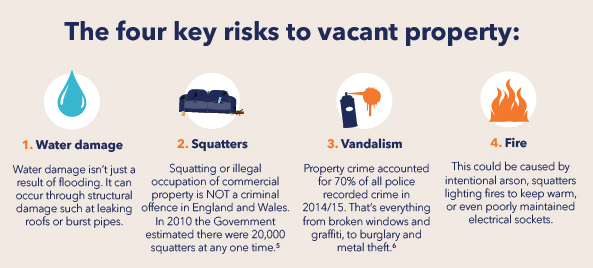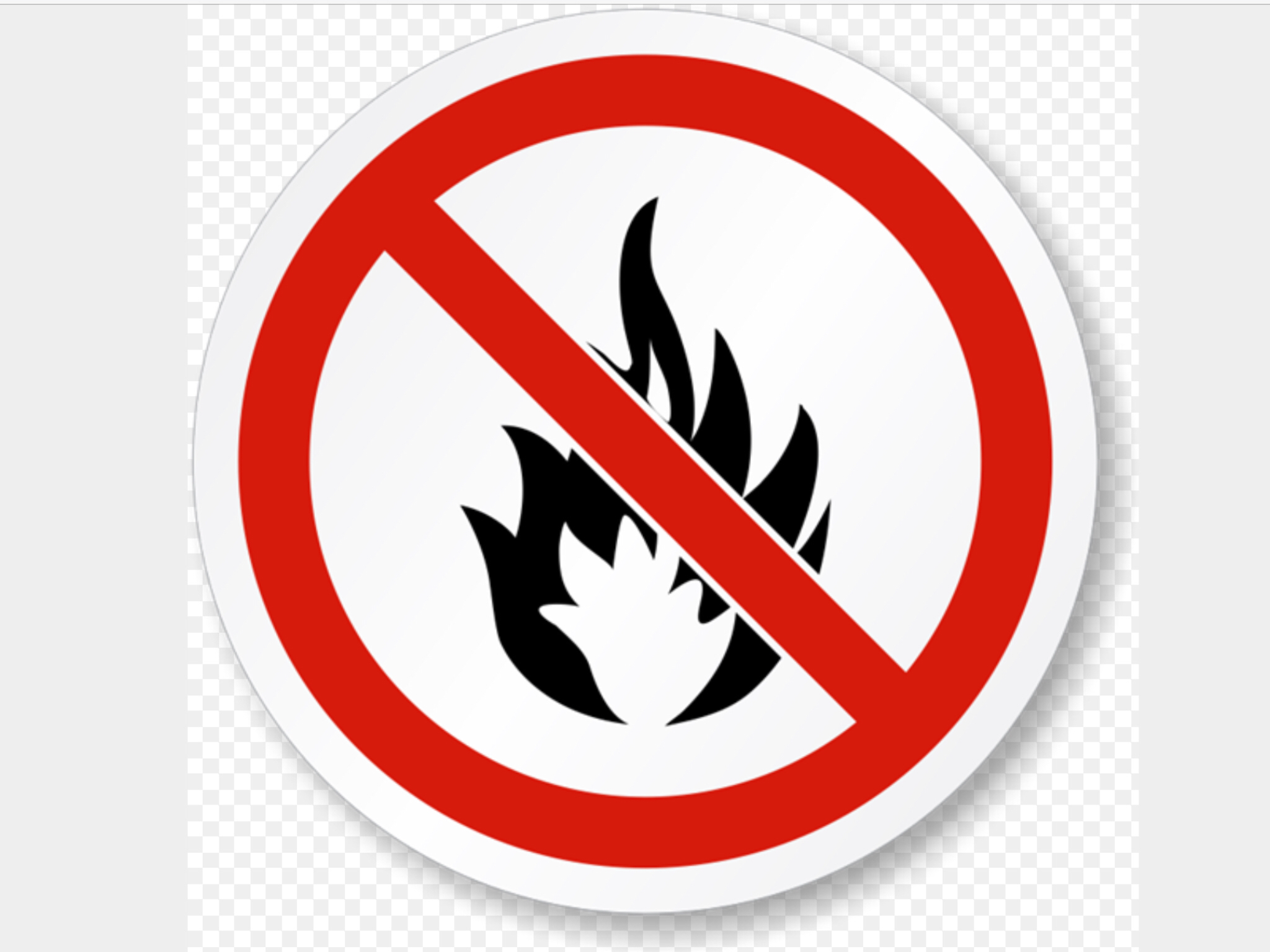Title Page
-
Conducted on
-
Prepared by
-
Location
-
Forecasted closure date
Checklist
General damage prevention
-
With a proactive approach much can be done to protect unoccupied buildings so they remain a valuable asset for future development or sale.
This checklist and associated guidance will assist in reducing the risk of loss or damage occurring at your premises.
Possible causes of damage that a property owner may suffer due to the building being unoccupied include:
- Fire caused by arson or a defective electrical installation
- Vandalism including malicious damage and graffiti
- Theft e.g. damage to the building when gaining access, theft of building materials and contents
- General deterioration caused by adverse weather or water ingress, possibly as a consequence of lack of maintenance
- Squatters.
There may also be a risk of personal injury to both lawful visitors e.g. contractors, employees, surveyors or estate agents and unlawful visitors e.g. intruders, vandals or children who may be attracted to the building through curiosity.
Under the Occupiers Liability Acts 1957 and 1984 property owners have a legal duty to make their properties as safe as reasonably possible. -
Do you have measures in place that would mitigate the risk of damage caused by fire caused by arson or a defective electrical installation
-
Do you have measures in place that would mitigate the risk of damage caused by vandalism including malicious damage and graffiti
-
Do you have measures in place that would mitigate the risk of damage caused by theft e.g. damage to the building when gaining access, theft of building materials and contents
-
Do you have measures in place that would mitigate the risk of damage caused by general deterioration caused by adverse weather or water ingress, possibly as a consequence of lack of maintenance
-
Do you have measures in place that would mitigate the risk of damage caused by general deterioration caused by squatters
Inspection of unoccupied buildings
-
It may be a requirement of your insurance cover that unoccupied buildings are inspected by you, or your appointed representative, on at least a weekly basis. This is to ensure that if damage has occurred e.g. storm damage to the property, it can be identified and rectified at the earliest opportunity, mitigating any further damage that may occur if left undetected for an extended period.
Any damage identified should be reported to your insurers and the police if crime-related.
Shutdown check
-
Have all utility been disconnected whilst the property is unoccupied (except where there are existing security systems, fire protection systems, security lighting or sprinkler systems)?
-
Is there a plan to maintain the installed services( security systems, fire protection systems, security lighting or sprinkler systems) to ensure they continue to be fully effective at all times?
-
Has the central heating systems been drained down?
-
Where water systems cannot be isolated and drained down, is the minimum temperature of 7C maintained within the property at all times?
-
Have all letterboxes been sealed or, if this is not possible, fitted with a metal box or cage to the inside?
-
Is there a plan to have any post removed on a regular basis and arrangements made with the Post Office for mail to be redirected?
-
Have all redundant contents been removed from the premises, as well as all combustible materials from the ground?
-
Has any oil tanks located in the grounds of the site been drained down?
-
Has any keys been recalled, or locks should been changed?
-
For non-domestic premises risk assessments for fire, health and safety and asbestos risks should be reviewed in
light of the changing circumstances. Any control measures to reduce the risk of injury to any visitors should be
implemented.
Securing the boundary
-
Have trees or hedges been cut back to ensure the building remains visible?
-
Is there an external security lighting with a motion sensor option or time switches to deter criminals by making suspicious activity more visible?
-
Are perimeter fences maintained in a good state of repair and repaired quickly if damaged?
-
Any gates should be at the same height as the fences to preserve security levels. Gates should be kept locked, preferably using a hardened steel locking bar and a closed shackle padlock.
-
Is the vehicle access made difficult by installing traffic bollards or other suitable obstacles?
-
Has any combustible waste been removed from the site?
Protecting buildings
-
Have all ground and accessible upper-floor windows and non-final exit doors been externally boarded up with plywood or steel sheeting?
-
Has the main entry door to the premises been secured by a five-lever mortice deadlock (or suitable equivalent) to BS3621?
Alarm protection
-
Are the existing intruder and fire alarm systems in operation?<br>These systems should be connected to an alarm receiving centre to support prompt notification and response to any activation.
-
If no existing intruder alarm is installed a temporary alarm system may offer additional protection. As above, you should consider using companies registered with NSI or SSAIB.
Keyholder procedures should be in place to respond to this type of alarm as the police may not.
A key holding security organisation could be used to assist. -
Is the intruder alarm system maintained by a company on the official list of recognised firms of a UKAS accredited inspectorate body i.e. NSI or SSAIB www.nsi.org.uk/directory or www.ssaib.org/security-provider-search?
-
Are Closed Circuit TV used with the system?<br>
-
Is it continually monitored by a security guard or alarm-receiving centre certified to BS5979 Category II or BS 8591?
Additional security and helpful information
-
1. In some situations a permanent security presence may be required. It is recommended that any guarding contractors selected are members of the NSI and accredited to NSI Gold standard or SSAIB. See www.nsi.org.uk/our-sectors/security or ssaib.org/security-provider-search.
2. Arson Prevention Forum. www.stoparsonuk.org.
3. The selection and use of electronic security systems in empty buildings. www.riscauthority.co.uk.
4. Risk Control. Arson Prevention. The Protection of Premises from Deliberate Fire Raising. www.riscauthority.co.uk.
Signoff
-
Signature














